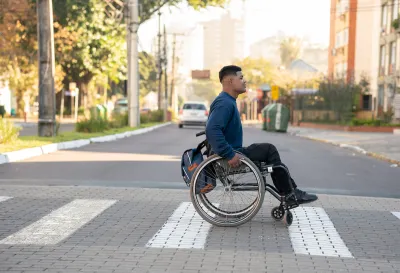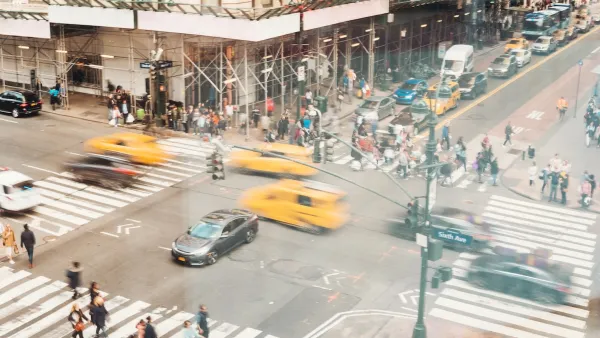Public agencies don’t track traffic deaths and injuries involving disabled people, leaving a gap in data to guide safety interventions.

In an opinion piece in Governing, Claudia Folska calls on transportation officials and planners to bring people with disabilities — one in four American adults — into the conversation about road safety. According to Folska, “No public agency at any level of government specifically tracks traffic fatalities and injuries involving disabled pedestrians. Police aren’t even required to note a disability on the accident report.” Yet wheelchair users are at a roughly 36 percent higher risk of dying than pedestrians on foot.
Folska argues that people with disabilities must be at the planning table, otherwise “roadway engineers and urban planners are basically taking educated guesses about where to spend money on safety improvements and which ones to employ.”
Folska suggests interventions like curb cuts, traffic calming, safe crosswalks, and accessible sidewalks, adding that “It would help to have an accurate count of accidents, injuries and fatalities involving anyone who meets the definition of disabled.”
“The U.S. Department of Transportation’s Fatality Analysis Reporting System, which provides the National Highway Traffic Safety Administration and other agencies with information on traffic fatalities, could and should create a category for disabled pedestrians, and then break it down by specific disabilities.” This data can then be used to make informed decisions about safety interventions.
FULL STORY: Disabled People Are Dying in America’s Crosswalks. We Need to Protect Them.

National Parks Layoffs Will Cause Communities to Lose Billions
Thousands of essential park workers were laid off this week, just before the busy spring break season.

Retro-silient?: America’s First “Eco-burb,” The Woodlands Turns 50
A master-planned community north of Houston offers lessons on green infrastructure and resilient design, but falls short of its founder’s lofty affordability and walkability goals.

Delivering for America Plan Will Downgrade Mail Service in at Least 49.5 Percent of Zip Codes
Republican and Democrat lawmakers criticize the plan for its disproportionate negative impact on rural communities.

Test News Post 1
This is a summary

Test News Headline 46
Test for the image on the front page.

Balancing Bombs and Butterflies: How the National Guard Protects a Rare Species
The National Guard at Fort Indiantown Gap uses GIS technology and land management strategies to balance military training with conservation efforts, ensuring the survival of the rare eastern regal fritillary butterfly.
Urban Design for Planners 1: Software Tools
This six-course series explores essential urban design concepts using open source software and equips planners with the tools they need to participate fully in the urban design process.
Planning for Universal Design
Learn the tools for implementing Universal Design in planning regulations.
EMC Planning Group, Inc.
Planetizen
Planetizen
Mpact (formerly Rail~Volution)
Great Falls Development Authority, Inc.
HUDs Office of Policy Development and Research
NYU Wagner Graduate School of Public Service





























